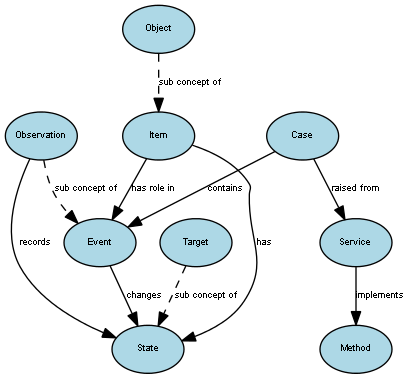|
|
Smart City Concept Model |
| Name | Observing and Responding |
|---|---|
| Model | Smart City Concept Model |
 |
A city might have a series of automated SERVICEs that respond in real-time to observed STATEs, to adjust settings to re-establish an optimum STATE. For example, sensors and actuators can be used to * manage traffic flows * control temperatures * reduce energy consumption 8.5.3. The model represents a sensor as an OBJECT ITEM, which can be related to a PLACE describe where it is. This view depicts three stages: * determining objectives, and optimum states of system * readings be taken by a sensor; * a service responding to inputs by changing settings For the first stage, the system is represented as an ITEM, for which one or more TARGET states can be defined. For the second stage, a sensor takes a reading of the system, which is represented as an OBSERVATION capturing the STATE of an ITEM. For the third stage, a further device or actuator might then be configured to automatically react to an observed STATE by changing settings. The actuator is also an OBJECT, which has a role in an EVENT that changes a STATE. The change of settings is a SERVICE, implementing a METHOD, provided by an AGENT. A log of the OBSERVATIONs, and settings is recorded in a CASE. So for example, stage 1 - an optimum temperature (TARGET) of a room (ITEM) can be set to reduce energy consumption ( OBJECTIVE ). stage 2 - a temperature sensor (OBJECT) might take a reading (OBSERVATION) of the temperature (STATE) of the room. stage 3 - a service (SERVICE) instructs (EVENT) the actuator (OBJECT) to change the valve setting (STATE) of a radiator (OBJECT). The impact of the change is then monitored via further observations recorded within the CASE |
© istanduk